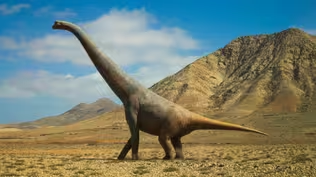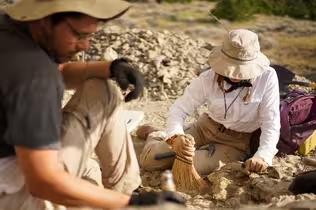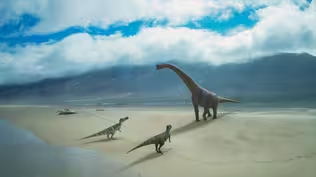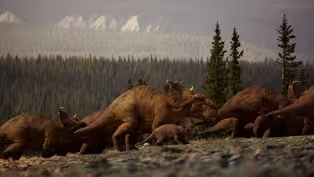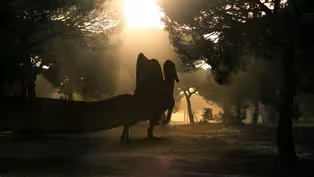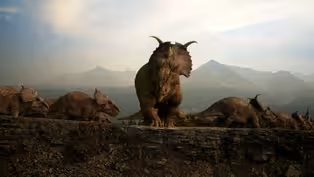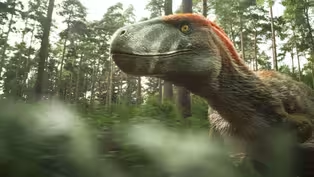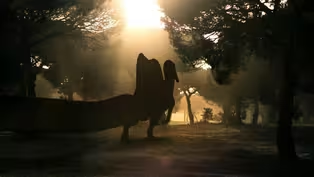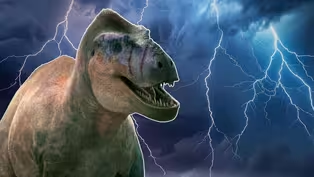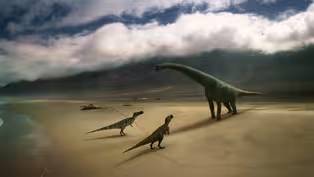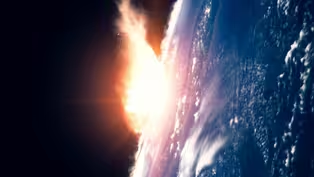
How We Solve Jurassic Mysteries from One Bizarre Fossil
Special | 5m 19sVideo has Closed Captions
Would you lick a 65-million-year old dinosaur poop?
Would you lick a 65-million-year old dinosaur poop? Granted, it’s not a question many people ask themselves - but for George Frandsen it’s a firm, “Yes!”. Not merely a dinosaur fossil hunter, George is specifically on the hunt for coprolites, the more scientific term for ancient dino dung.
Problems playing video? | Closed Captioning Feedback
Problems playing video? | Closed Captioning Feedback
Narrator: Shane C. Campbell-Staton Digital Producer & Director: Mark Atwill Digital Producer: Tom Heyden Post Production: Envy Post Production Visual Effects: Lola Post Production Archive: The National Archives and Records...

How We Solve Jurassic Mysteries from One Bizarre Fossil
Special | 5m 19sVideo has Closed Captions
Would you lick a 65-million-year old dinosaur poop? Granted, it’s not a question many people ask themselves - but for George Frandsen it’s a firm, “Yes!”. Not merely a dinosaur fossil hunter, George is specifically on the hunt for coprolites, the more scientific term for ancient dino dung.
Problems playing video? | Closed Captioning Feedback
How to Watch Walking with Dinosaurs
Walking with Dinosaurs is available to stream on pbs.org and the free PBS App, available on iPhone, Apple TV, Android TV, Android smartphones, Amazon Fire TV, Amazon Fire Tablet, Roku, Samsung Smart TV, and Vizio.
Providing Support for PBS.org
Learn Moreabout PBS online sponsorshipMore from This Collection
Check out our 12 digital exclusives from our series Walking with Dinosaurs with BBC.
When Dinosaurs Ruled the Arctic Circle
Video has Closed Captions
Very few dinosaurs made it as far North as the Arctic Circle...except for two. (5m 52s)
We Were Wrong About Spinosaurus
Video has Closed Captions
Millions of years ago, dinosaurs ruled the Earth. But underwater it was a totally different world. (6m 36s)
Were Dinosaur Brains Designed For Combat?
Video has Closed Captions
Did Pachyrhinosaurus bones always gather in such great numbers? (5m 42s)
How Walking with Dinosaurs Created the Most Accurate Dinos Ever
Video has Closed Captions
Join the team behind the scenes! (6m 32s)
How to Find a Dinosaur that Hollywood Dreamed Up
Video has Closed Captions
What would make a Utahraptor so much larger than other raptor species? (5m 50s)
How the Walking with Dinosaurs Team Brought a Dinosaur Back to Life
Video has Closed Captions
The Walking With Dinosaurs team reveal how they created the Spinosaurus. (5m 50s)
How Extreme Weather Is Revealing — And Destroying — Dinosaur Fossils
Video has Closed Captions
Imagine finding a rare fossil that you’ve been desperate to find - only for it to be put at risk. (5m 59s)
How an Evolutionary Arms Race Created Bizarre Dino Designs
Video has Closed Captions
It’s grudge match time. Except that this one took place over millions of years. (5m 32s)
The Dinosaurs that Could Cross the Atlantic
Video has Closed Captions
How did dinosaur fossils get there? (5m 42s)
Did Dinosaurs Abandon Their Young to Help Them Survive?
Video has Closed Captions
In late Cretaceous Alberta, many apex predators roamed free, so how did the prey survive? (5m 45s)
Did a Meteor Kill All the Dinosaurs?
Video has Closed Captions
Did the asteroid kill the T. rex and Triceratops? (5m 42s)
Providing Support for PBS.org
Learn Moreabout PBS online sponsorship-It's not, uh, soft, [sniffs] smells like stone, it's hard as a rock and uh... [camera shutter clicks] -[Narrator] This man just put his tongue on some poop.
-...you put your tongue on it.
-[Narrator] On purpose, but it's okay because it's all in the name of science.
George Frandsen is on the hunt for fossils.
But not the bones, claws or teeth you might imagine when you think of a dinosaur fossil.
He's specifically looking for fossilized dinosaur poop.
-I thought that was one, but it turns out just to be, turns out to be bone.
-[Narrator] Luckily, he doesn't have to wait too long.
And the licking part makes sense too.
-Put your tongue on it, it sticks because it's porous.
And that's one of the ways you can tell it's a coprolite.
-[Narrator] Fossilized poop, known as a coprolite, which literally means dung stone, provides a wealth of information to paleontologists seeking to understand more about the lifestyle, behaviors, and eating habits of dinosaurs, as well as the surrounding ecosystem.
-[George] They're kind of the joke fossil, but they really have enormous scientific information.
-[Narrator] George Frandsen is the latest in a long line of scientists bewitched by the secrets nestled inside of some ancient dino dung.
Famed fossil hunter Mary Anning was the first to observe them in 1824.
Breaking them open, she'd regularly find fossilized bones inside the coprolites.
But others weren't as interested in the dinosaur aspect.
In the mid-19th century, the phosphate found in ancient poop helped revolutionize agriculture by launching the artificial manure industry.
By World War I, that phosphate was in demand for a different reason.
Concerned by German attacks on its supply, the British government turned to fossilized poop to provide phosphate for munitions.
[rapid firing] But most scientists have been captivated by just how much a single poop can tell us about the ancient world.
It's thanks to fossilized poop that we now know about an extinct, never-before-seen beetle that was found preserved in a 230-million-year-old turd.
But for all this, every coprolite discovery starts with the same mystery.
A classic whodunnit.
And it's not very easy to determine the culprit.
The first clue is the size.
The bigger the poop, the bigger the dinosaur that laid it.
-[George] Most of them that you find are just really tiny.
They're, you know, a quarter of an inch, half an inch long.
You know, where most people think, "Oh, there gotta be dinosaur poop, so they’re these big things."
And really, the bigger they are, the more rare they are.
-[Narrator] And in George's collection is the largest fossil poop ever found.
-[George] The biggest one I have in the collection is 26 and a half inches by about just over six inches wide.
-[Narrator] The size alone rules out smaller dinosaurs.
But there are other clues, too.
Analyzing what's actually in the dung can also tell us whether it was laid by a meat-eater or an herbivore.
-[George] Most coprolites that are discovered are from carnivorous animals.
Because they make poo with a lot of phosphorus and calcium, that helps the mineralization process.
-[Narrator] The bulk of that calcium phosphate will have come from carnivores crunching the bones of their prey.
[ground rumbles] And there's no more famous bone cruncher than the T. Rex.
And all these bones also transform the shape of a fossil feces.
-[George] Carnivorous animals, when they poop, most times it's very cylindrical.
And when they fall and they hit the ground or hit a hard surface, they bend.
So, a straight classic turd turns into almost like a little L shape.
-[Narrator] The final clue that this gigantic coprolite came from a mighty T. Rex is the angle.
The bend indicates it might have fallen to the ground from about 8 feet, the approximate height of a T. Rex's behind.
-[George] A coprolite is like a time capsule that tells all about that moment in history where that poop was made.
[snarls] We can tell how it digested.
We can tell about the acidity in their, their stomach.
We can tell what it ate.
-[Narrator] What may seem silly at first, is in fact a fascinating insight into the biochemical ecosystem millions of years ago.
-It's not gross.
I think that's the big misconception.
Once people get over that, it's not too far until they're all in about fossilized poop.
They are fans.
They're with it.

- Science and Nature

Explore scientific discoveries on television's most acclaimed science documentary series.

- Science and Nature

Capturing the splendor of the natural world, from the African plains to the Antarctic ice.












Support for PBS provided by:
Narrator: Shane C. Campbell-Staton Digital Producer & Director: Mark Atwill Digital Producer: Tom Heyden Post Production: Envy Post Production Visual Effects: Lola Post Production Archive: The National Archives and Records...

